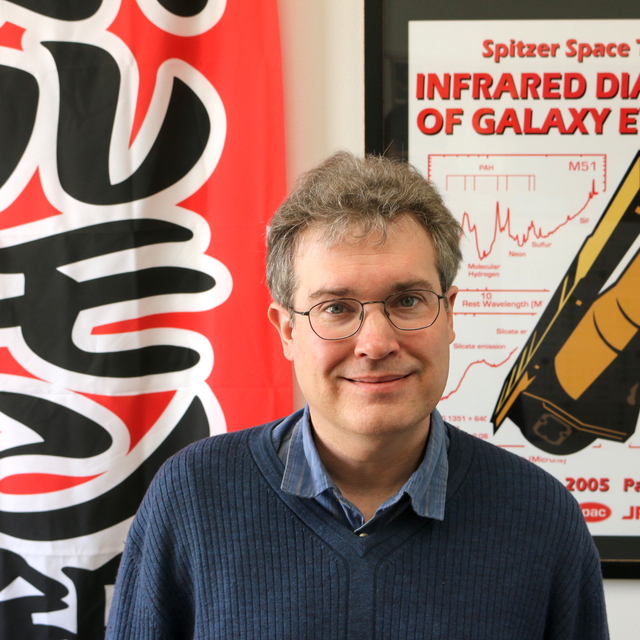
CEERS: 7.7 μm PAH Star Formation Rate Calibration with JWST MIRI
July 2024 • 2024ApJ...970...61R
Abstract
•
We test the relationship between UV-derived star formation rates (SFRs) and the 7.7 μm polycyclic aromatic hydrocarbon luminosities from the integrated emission of galaxies at z ∼ 0–2. We utilize multiband photometry covering 0.2–160 μm from the Hubble Space Telescope, CFHT, JWST, Spitzer, and Herschel for galaxies in the Cosmic Evolution Early Release Science (CEERS) Survey. We perform spectral energy distribution (SED) modeling of these data to measure dust-corrected far-UV (FUV) luminosities, L FUV, and UV-derived SFRs. We then fit SED models to the JWST/MIRI 7.7–21 μm CEERS data to derive rest-frame 7.7 μm luminosities, L 770, using the average flux density in the rest-frame MIRI F770W bandpass. We observe a correlation between L 770 and L FUV, where
Links
- SIMBAD https://simbad.u-strasbg.fr/simbad/sim-ref?querymethod=bib&simbo=on&submit=submit+bibcode&bibcode=2024ApJ...970...61R
- PDF https://iopscience.iop.org/article/10.3847/1538-4357/ad5006/pdf
- PREPRINT http://arxiv.org/abs/2310.07766
- DATA https://archive.stsci.edu/mastbibref.php?bibcode=2024ApJ...970...61R
- DATA https://archive.stsci.edu/mastbibref.php?bibcode=2024ApJ...970...61R
- DATA https://doi.org/10.17909/8s31-f778
- DATA https://doi.org/10.17909/T94S3X
- DATA https://doi.org/10.17909/z7p0-8481
- ELECTR https://doi.org/10.3847/1538-4357/ad5006




